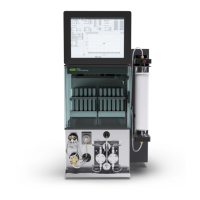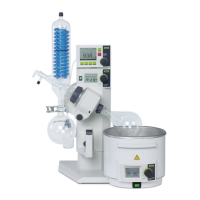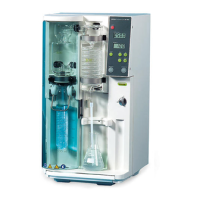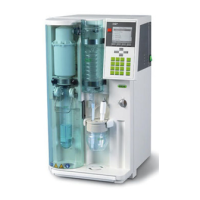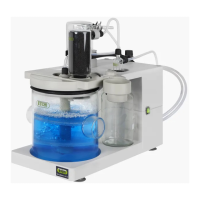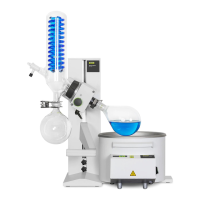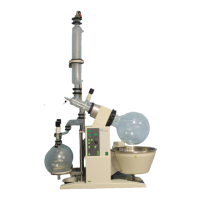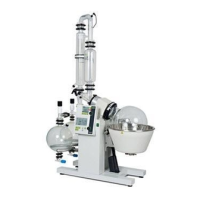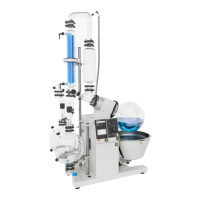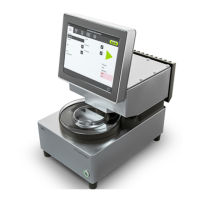
Do you have a question about the Buchi ProxiMate and is the answer not in the manual?
| Measurement Mode | Reflectance |
|---|---|
| Type | Benchtop NIR Spectrometer |
| Light Source | Halogen lamp |
| Power Requirements | 100-240 V AC, 50/60 Hz |
| Technology | NIR (Near-Infrared) Spectroscopy |
| Sample Type | Solids, powders, pastes |
| Interface | Touchscreen |
| Detector | InGaAs detector |
| Measurement Time | Less than 1 minute |
| Sample Presentation | sample cup |
| Calibration | Pre-calibrated, user calibration possible |
| Display | Color touchscreen |
| Connectivity | USB, Ethernet |
| Application | Food, feed, chemical, and pharmaceutical industries |
Identifies danger levels and meanings for warnings.
Explains warning symbols, notes, and text conventions used in the manual.
Lists product names and registered/unregistered trademarks.
Defines intended use and applications not permitted for the instrument.
Outlines necessary qualifications for users and operators.
Details potential hazards and necessary precautions for safe operation.
Specifies required PPE based on potential hazards during operation.
Warns against modifications and outlines liability.
Explains how the NIR spectrometer operates and processes data.
Describes up view and down view configurations for sample analysis.
Details diffuse reflection and transflectance modes for different sample types.
Shows front and rear views, connections, and type plate locations.
Information on what is included with the instrument based on purchase order.
Details dimensions, weight, power, connections, IP code, and appliance classes.
Specifies operating environment limits and materials used in instrument construction.
Instructions for packing, handling, and checking the instrument during transport.
Guidance on storing the instrument in its original packaging and suitable conditions.
Safety warning and procedure for lifting the instrument, requiring two persons.
Steps before installation and criteria for the installation site.
Method for securing the instrument to prevent movement during seismic activity.
Instructions for connecting the instrument to power, including safety warnings.
Steps for connecting and securing USB devices to the instrument.
Procedures for applying for and importing software licenses.
Calibrating Baseline Correction Vector and importing external reference data.
How to select and set the user interface language for the instrument.
Overview of the instrument's control panel layout and function bar.
Explains the menu bar symbols and their corresponding functions.
Describes elements within the Start menu and the functions of the control button.
Lists past measurement data and provides access to related functions.
Navigating the data menu, selecting filters, and deselecting filters.
Creating, editing, and selecting applications for measurement.
Accessing tools for configuration, maintenance, and system tests.
Explains different status indications shown on the instrument's status bar.
Procedure to log in as administrator for advanced settings and access.
Creating, copying, and editing applications, including their names and descriptions.
Procedures for removing applications and properties from the instrument.
Creating, renaming, and modifying properties within an application.
How to use AutoCal to update calibrations with new measurement data.
Methods for transferring application configurations between instruments.
Generating reports from measurements and exporting data in various formats.
Step-by-step guide for preparing, starting, and ending a measurement.
Routine cleaning and checks for the instrument's components.
Detailed procedures for replacing the down view and up view lamps.
Verifying successful lamp replacement through instrument settings.
Procedures for inspecting the desiccant cartridge and replacing it when needed.
Executing Baseline Correction Vector, Comprehensive, and Advanced System Tests.
Solutions for problems like sample carrier rotation or inaccurate results.
Lists error codes and their corresponding solutions or actions.
Steps to safely power down and disconnect the instrument.
Guidelines for environmentally sound disposal of the instrument and its materials.
Contact information and process for returning the instrument.
Explains the meaning of different result indicators like 'Invalid' or 'Outlier'.
Lists default paths for calibration files, exported data, and license requests.
Naming conventions for variables and available calculation operators/functions.
Details of available accessories, their order numbers, and images.
Details of essential spare parts, their order numbers, and images.
